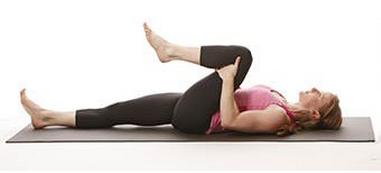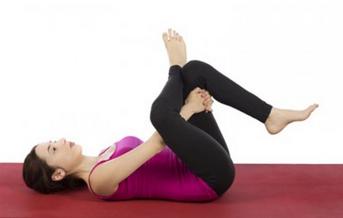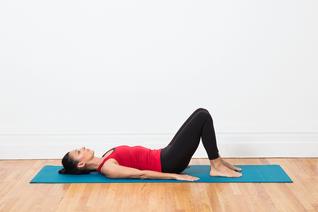Help for the Most Common Golf Injuries

So, you’ve finally gotten back out there, enjoying a day on the links, and what should befall you but an injury.
Without even knowing you we may be able to guess what hurts.
Is it your back? That’s the most common golf injury, ache, and pain.
Or maybe it is golfer’s elbow - tendinitis of the elbow - that has you down.
Of course, it could be your shoulder, knee, or maybe the wrist.
We don’t really know what is hurting you until you come to see us, it’s true. But, at Daniels Chiropractic in Mt. Pleasant, Caledonia, and Racine, we do know how brutal a golf swing can be. It takes a toll on the human body.
Anyone who says golf isn’t a real sport has not ever tried to play it. They have never experienced the force on the shoulders, hips, arms, wrist, and knees. They have not felt the back-breaking ache of hunching over a ball for far too long, all to make it go in that tiny, distant hole.
The Golf Swing
The golf swing is a complex motion of the whole body to generate and focus power to a golf ball so that the momentum produced moves this ball a great distance with precise accuracy. It involves a coordinated sequence of muscle contractions in the arms, shoulders, back, hips, legs, knees, arms, hands, head, and feet. Basically, the entire body.
And, this motion must be fluid and reproducible.
For each swing there is considerable stress placed on the back muscles and spine, not to mention the hips, knees, elbows, wrists, hands, and neck.
It seems like there are a million things that can not only go wrong - and that is what you spend most of your time focused on - but also there are so many ways that the joints and soft tissues can feel stressed, pulled, and injured.

Pulled a Back Muscle?
First, you need to rest. Treating back strains and sprains involves both rest (to allow the muscle to relax and stop spasming) AND movement. When an injury causes acute pain you will naturally want to rest. Find the position that relieves as much pain as possible.
Put a pillow under your knees if you prefer lying on the back; put it between the knees if you prefer side-lying. But, you won’t be able to stay in bed very long and recover well!
While you are in the initial rest phase, lasting 24 to 48 hours, be sure to get up every few hours to move around, even if it is slowly and carefully.
During this rest phase you need to ice the injured area. At the onset of pain after an injury, use a cold pack for 20 minutes on the injured area; rest for at least 45 minutes, then you can ice it again. Icing reduces inflammation, swelling, and produces a numbing effect. Always let the muscle return to body temperature before using ice again.
Once the initial, acute pain subsides, you can use a heat pack or heating pad to get the blood flowing in the injured area. This speeds healing and hastens your ability to move more freely.
After the acute episode resolves, it’s time to begin gentle stretching exercises. If any of these causes pain, back off and wait another day.
Daniels Chiropractic has collected the most effective, gentle stretches to help you begin your recovery from back strains and sprains.
Single Knee to Chest

Lie down on your back on a mat on the floor with the legs extended. Bend one knee, place the hands behind the thigh, and pull back towards your chest until a light stretch is felt down the back of the leg. Hold as you are able; aim for 30-60 seconds. Switch legs and repeat. Aim for 3-5 reps for each leg.
Piriformis Stretch

Lie on the back with knees bent, feet flat on the floor. Lift the right ankle and place on the left knee. Put hands behind the left thigh and gently pull toward the chest for a gentle stretch. Stop if you feel pain and back off. If needed you can use a towel behind the thigh to hold onto for more leverage. Hold stretch for 20-30 seconds and repeat 3 times. Repeat this on the other side.
Child’s Pose

This yoga pose passively stretches the back muscles (lumbar erector spinae).
Kneel down and sit back on your feet. Lower your upper body down towards the floor and over the knees/legs. If able, extend your hands out in front of you resting on the floor. Now gently rest your forehead on the floor in front of you and allow your back to relax. Breathe deeply 10 times.
Pelvic Tilt

This move helps adjust an exaggerated arch in the lower back.
Lie flat with the knees bent and feet flat. Tighten your abdominal muscles (bracing or engaging the abs) and move the small of the back towards the floor. The lower pelvis tilts up slightly. Breathe and hold the contraction for 10 seconds. Do 10 reps if you are able.
A few pointers: Rest your arms by your side. While keeping your feet flat on the floor, you can also press the heels into the floor to protect the hamstrings from cramping. Relax your shoulders and neck and remember to breathe throughout the exercise.
If you can do the above stretches without pain, you are ready to get moving. Walking is best until your back feels well. While you are in the recovery phase, don’t do any heavy lifting or exercises with sudden or pounding movement. You can easily aggravate and reinjure the weakened area.
Elbow Pain
Pain in your elbow could be golfer’s elbow (inside elbow) or tennis elbow (top of arm near the elbow). Either way, rest your elbow, apply ice regularly to reduce inflammation, and wait till the pain subsides. You can strengthen the arm muscles to prevent future injury when you begin to feel well.
Here’s an exercise we like to recommend (you’ll need a small dumbbell/ handheld weight):
Knee Pain
It’s difficult to treat the knee without an examination to understand exactly what is injured. Make an appointment with your primary physician or orthopedic, and in the meantime, rest and ice it for the first few days. Then switch to heat and gentle movement, if you are able to move it.
Shoulder Pain
Most shoulder golf injuries can benefit from ice, rest, and eventual strengthening exercises. Here is a collection of strengthening exercises once you begin to feel better. If your pain does not improve, see your primary doctor or come see us at Daniels Chiropractic.
Wrist Pain
Wrist pain develops from overuse, poor mechanics, or trauma while playing. Once you are in pain, rest and ice your hurting wrist for the first 2 - 3 days. Then, switch to heat to bring increased blood flow and easier motion to the area.
Making a change in your clubs could actually help. Graphite shafts, cavity backed clubs (to reduce impact vibration), and a fatter grip are features that may help reduce the incidence of wrist injury.
To stretch and strengthen the wrists and muscles that support the wrists, here are two exercises and one “practice.”
Motorcycles
Extend the arms straight out in front of you with hands in a fist as if holding onto a motorcycle. Flex the wrists down as if giving gas. Release and repeat this 15 times. Notice if one wrist is stiffer than the other and keep at it.
Fonzies
Extend the arms again in front of you and close the fist but keep the thumbs pointing up. Flex the thumbs forward as if casting forward. Release and repeat 15 times.
A Practice
Massage the muscles of the forearm after these two exercises to get them warmed up and to release any trigger points. Stretch out each finger as well, pulling them back gently one by one.
Stretch and Strengthen For A Better Golf Swing
An ounce of prevention is worth a pound of cure, for sure. The golf swing puts a tremendous amount of pressure on much of your body from your head to the knees, at least. Check out our stretching and strengthening plan to get and keep your body in shape for a great swing.OK Cancel
Come See Us
Your first few days nursing an injury are all about reducing your pain by decreasing the inflammation at the injury site. Remember to rest and ice!
Then try the exercises we have given you. But if you need more help, give us a call at 262-638-999 to make an appointment for the next phase of your recovery. We are committed to helping you feel, move, and live better.
At Daniels Chiropractic we want to help you get better.
Daniels Chiropractic Office
2609 Rapids Drive
Racine, WI 53404
Phone: 262.638.9999
Fax: 262.638.0742
